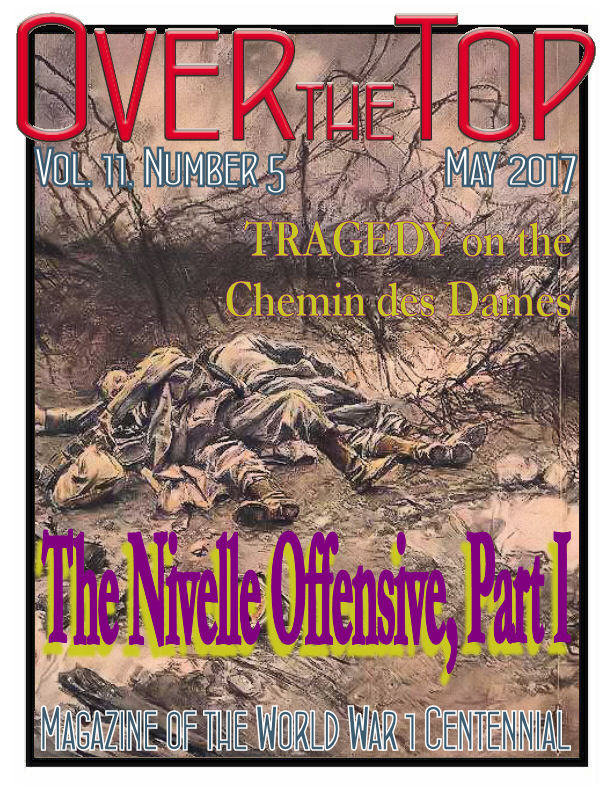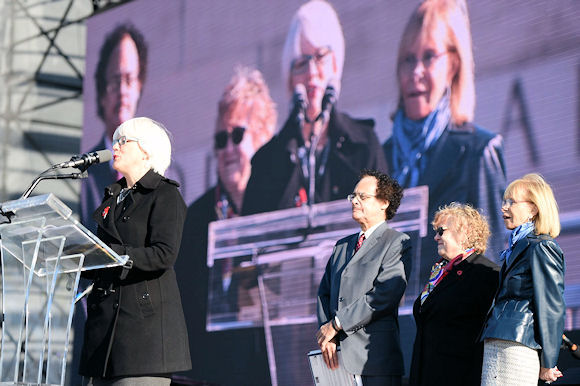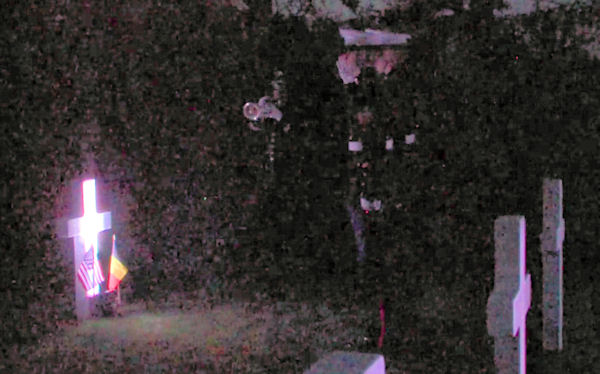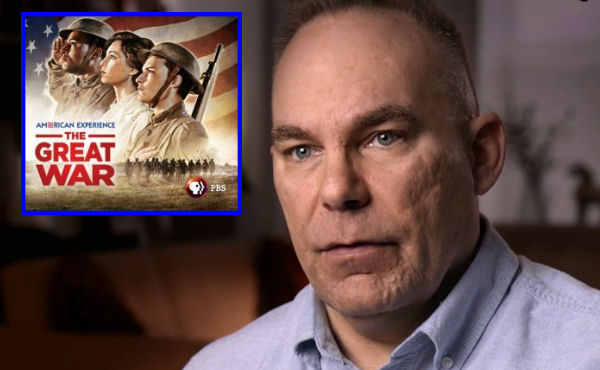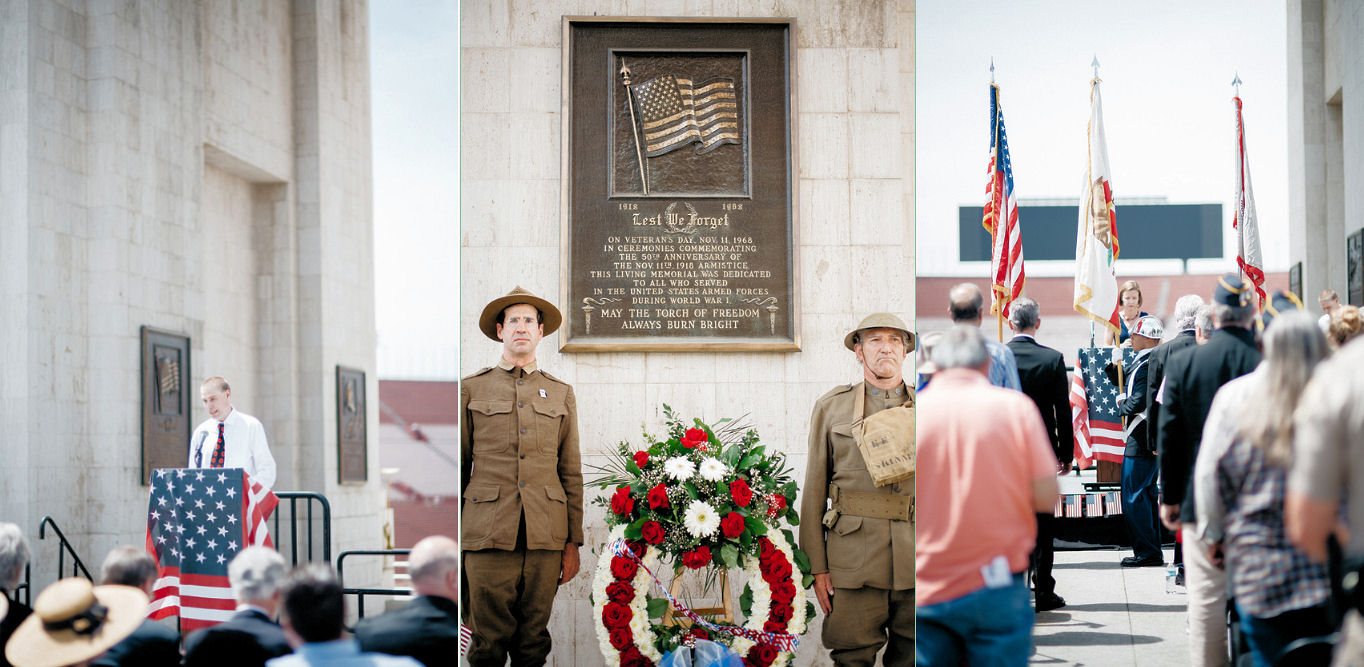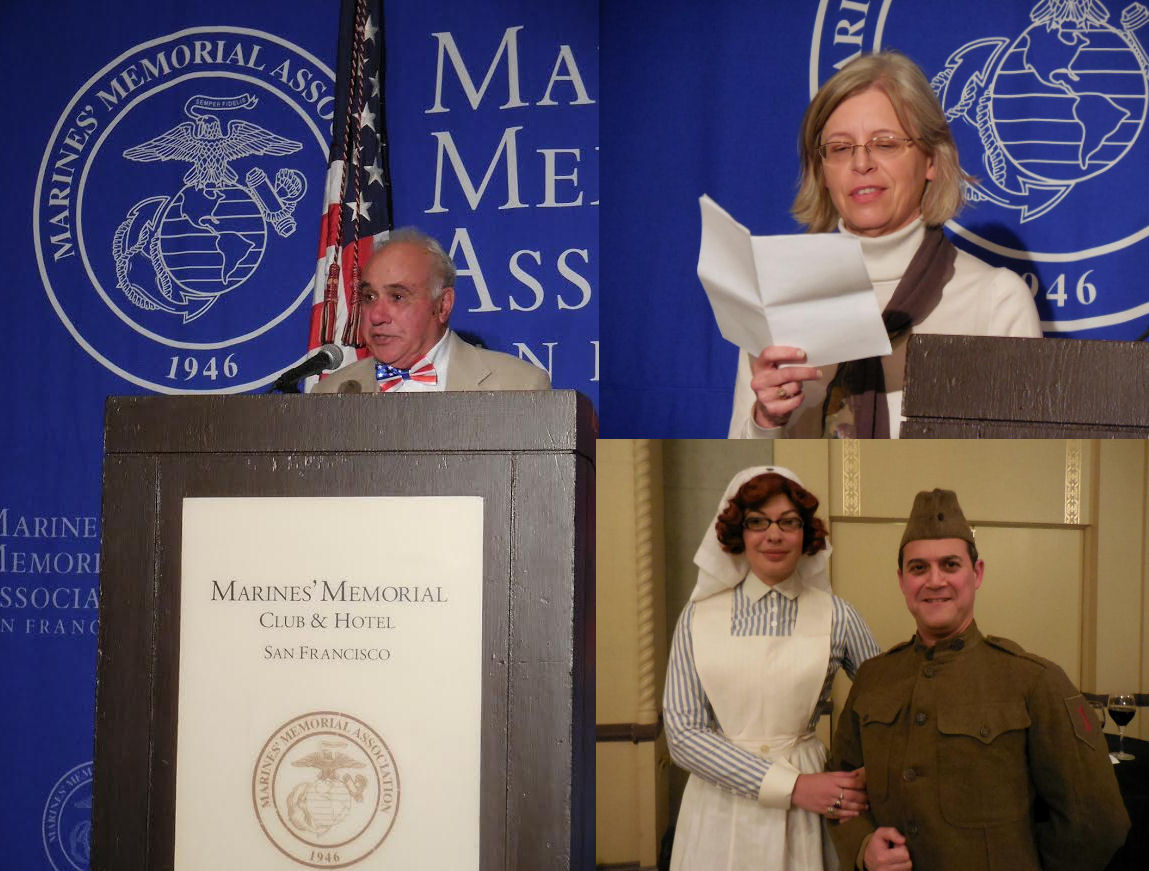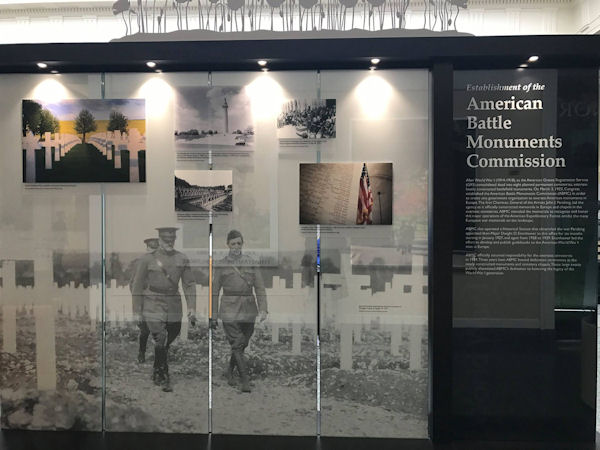
May
2017 |
 |
|
|


WWI in the Spring of 2017
April was a busy month for anyone interested in the Great War. For me, besides keeping track of all the commemorations surrounding the anniversary of America's entry, and other 100-year-ago landmarks like the Nivelle Offensive, I've had to prepare for my springtime battlefield expedition, which will include looks at the Battles of Arras, Vimy Ridge, Messines, and Passchendaele. In future issues of the Trip-Wire I'll have updates and photos of the tour. Also, don't forget to check in on our daily blog, Roads to the Great War. There's an icon you can click on at the bottom of this column for easy access. Till next month. . .
MH

|
2017
World War 1 History Symposium
U.S. Army Heritage and Education Center
Carlisle, PA
Saturday — 13 May 2017, 10:30 a.m.
Program & Details: HERE
How WWI Changed Richmond, CA
Richmond Museum of History
Recommended & Supported by the World War One Historical Association
Exhibits & Programs: Now thru 30 June 2017
PDF Flyer with Details: HERE
99th Annual 314th Memorial Day Service
Washington Memorial Chapter
King of Prussia, PA
Sunday — 28 May 2017, 2 p.m.
Contact for Information: nancy.schaff@gmail.com
Quarterly Mtg, League of WWI Aviation Historians
National Air and Space Museum
Venue: Steven F. Udvar-Hazy Center:
Thursday — 10 June 2017, 10 a.m.
Program & Details: HERE
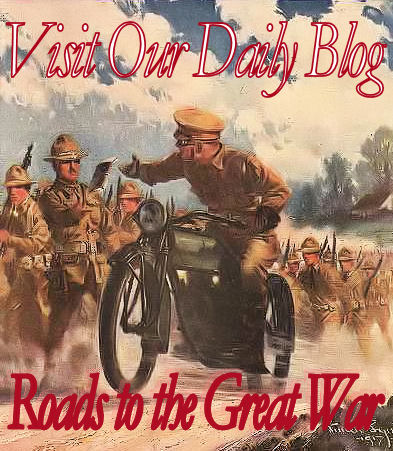
Click on Image to Visit Our Daily Blog.
|
|
Poster of the Month
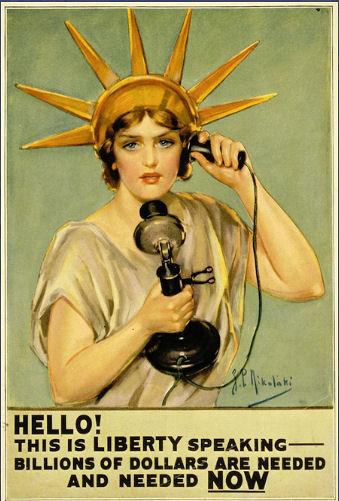
Another Example of How Miss Liberty Was Called Upon to Support the War Effort

America Goes to War, Part 2: Organizing for Victory
 The Need for an American Expeditionary Force
The Need for an American Expeditionary Force
 Where To Deploy American Forces & How Many?
Where To Deploy American Forces & How Many?
 Defining the Mission of the AEF
Defining the Mission of the AEF
 Organizing the Marine Corps for WWI
Organizing the Marine Corps for WWI
 The U.S. Navy in the Great War
The U.S. Navy in the Great War
 The Leadership of General Pershing
The Leadership of General Pershing
 Lafayette, We are Here!
Lafayette, We are Here!

Can You Name This WWI Veteran?
Win a Free Issue of OVER THE TOP!
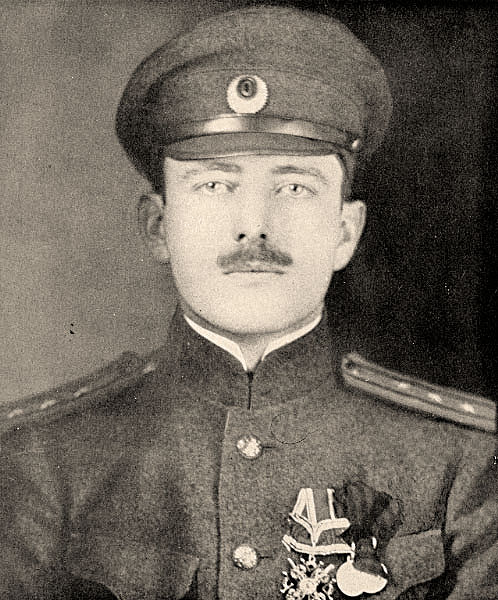
Hints: This officer in the Russian Army would serve with distinction in another nation's military in WWII.
If you can name this World War I veteran, we will send you a free issue of our monthly subscription magazine, OVER THE TOP. Email your answers HERE.

23 May 1917
At 3:00 the Prime Minster brought Prince Sixte of Bourbon [brother of the Empress of Austria] who is serving in the Belgian Army. He came to inform me that the Emperor of Austria had written to him to try and arrange for a separate peace with the Entente. The difficulty will be Italy. It is of course very secret: only M. Poincaré and M. Ribot know. It would be a great thing if it could be brought about.
George V
|

|

|

May 1917
U.S. Congress Passes
the Selective Service Act
Six weeks after the declaration of war against Germany on 6 April 1917, Congress passed the Selective Service Act. Initially, President Woodrow Wilson and Congress had hoped the needed one million men would volunteer for the army. But when by May only about 73,000 men had signed up, it was clear other measures needed to be taken.
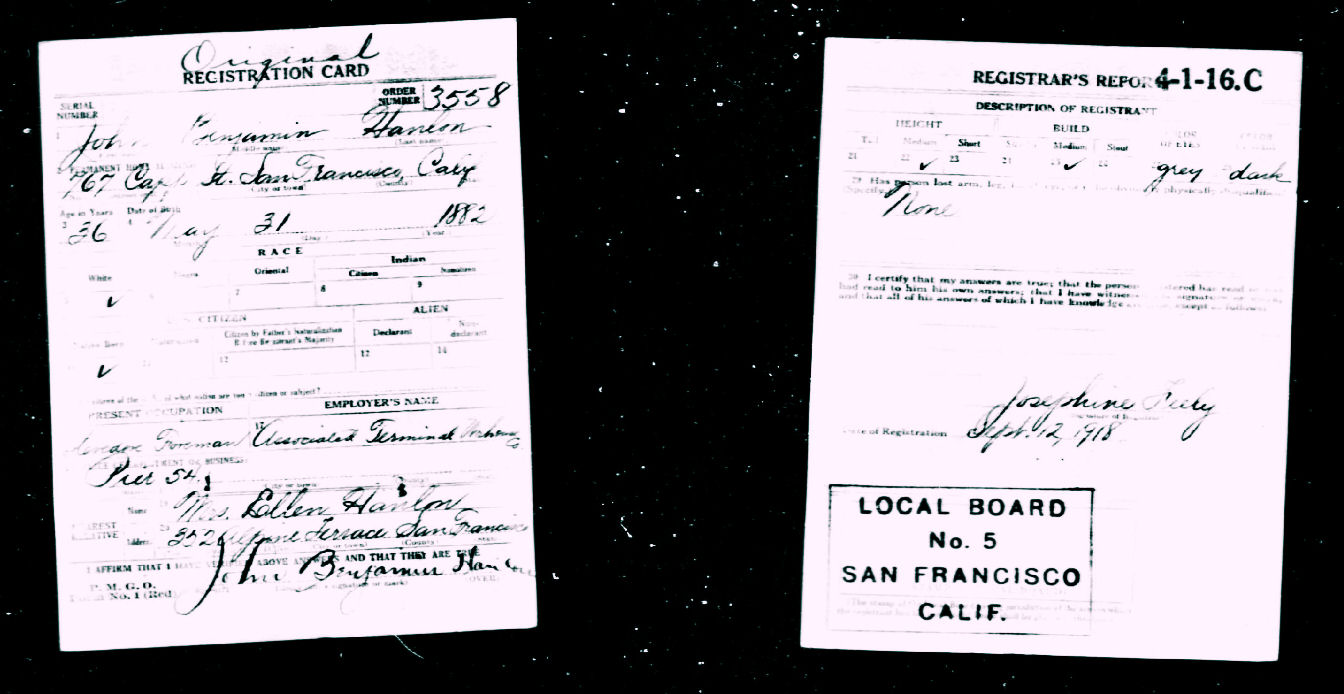
Draft Registration Card for the Editor's Grandfather, John Benjamin Hanlon
The United States had experimented with conscription laws during the Civil War. The Confederacy had passed the first such law (S.32) on 16 April 1862. The Union followed by passing a conscription law on 3 March 1863, ch. 75, 12 Stat. 731. Both Union and Confederate subscription laws allowed for a number of exemptions as well as including the very unpopular measure of “substitutes,” which allowed wealthy men to pay for someone to serve in their stead.
However, the World War I Selective Service Act specifically forbade the use of substitutes. This law, which was passed on 18 May 1917, applied to all “male citizens, or male persons … who have declared their intention to become citizens, between the ages of twenty-one and thirty.” The law directed that quotas for each state should be established based on the state’s population. The law also addressed the issue of exemptions based on moral objections, as well as occupation. Those exempted from the draft included federal and state officials and judges, religious ministers, seminary students and any person who was found to be a “member of a well-recognized religious sect or organization … whose existing creed or principles forbid its members to participate in war in any form.”
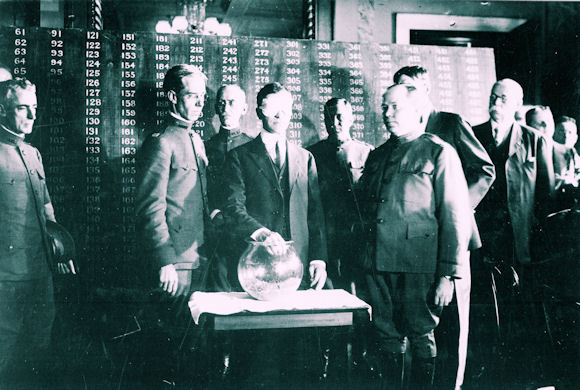
Secretary of War Newton Baker Draws the First Draft Number on 20 July 1917
However, as the law went on to state, “no person so exempted shall be exempted from service in any capacity that the President shall declare to be noncombatant.” The law also exempted persons in certain classes or industries, including workmen in armories and those in agriculture whose work was “necessary to the maintenance of the Military Establishment.”
Ultimately the regulations issued by the president divided up the men subject to conscription into five classes. This law directed the president to create local draft boards in each county that were to consist of three or more members who were to determine all questions of exemption in their jurisdiction. The law further set up district boards that could hear appeals from the county draft boards.
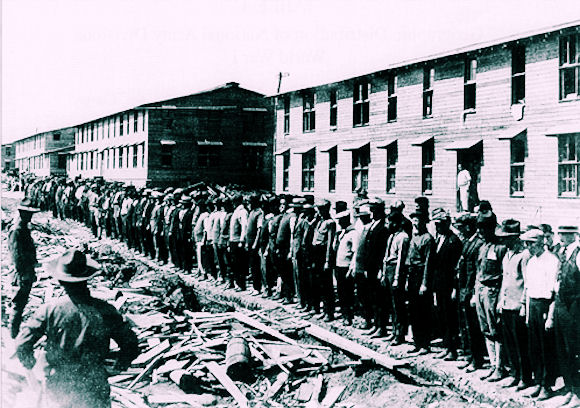
Conscripted New Soldiers Arrive at Camp Upton, NY
Between 6 and 19 August 1918, the House Committee on Military Affairs held hearings to consider expanding the ages between which men should be drafted. Secretary of War Newton D. Baker testified at the hearing that, “There are two ways of fighting this war. One is to make every possible effort and win it soon, and the other is to proceed in a somewhat more leisurely fashion and win it late.” Congress appears to have preferred the first method, and a little less than two weeks later amended the Selective Service Act. This law made all men between the ages of 18 and 45 subject to the draft. The penalties for evading the draft remained the same. The evader would be charged with a misdemeanor and subject to a year of imprisonment unless the evader was subject to military law, in which case they would be tried by a court-martial. Congress anticipated a shortage of “manpower” and directed that soldiers’ wives should not be disqualified from working for the government because they were married women. Indeed, ten years after the war, Congress held hearings about the effect of the universal draft and conscription in times of war.
Source: Library of Congress Blog
|
|

Our 2017 & 2018 Centennial Battlefield Tours
Now Accepting Bookings For All Tours
2017
Caporetto and the Italian Front
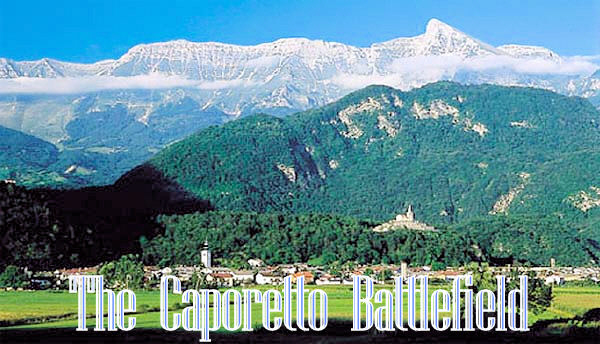
25 July – 4 August 2017: The Most Important Battle of the Italian Front
Includes: The Eleven Battles of the Isonzo, Caporetto 1917, Monte Grappa, and Vittorio Veneto. We will also follow the advance of the American Doughboys sent to the Italian Front.
Reduced Price — $3,950 (dbl occupancy, sgl supp avail)
The full brochure covering the trip and registration details can now be downloaded
HERE
2018
Kaiser's Offensives &
the British Army's 100 Days
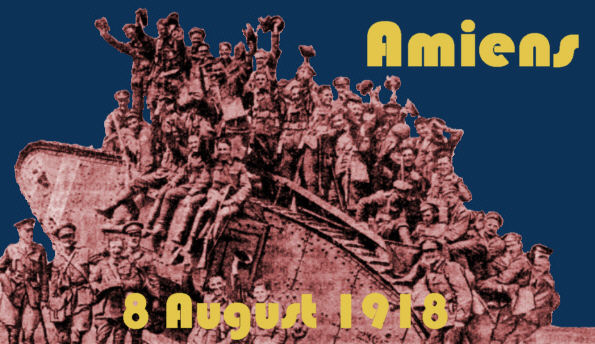
6 – 14 May 2018: Study of Germany's Last Effort to win the War and the British Victory offensive.
Includes: German advances in the Somme, Flanders, and the Marne Sectors, the Black Day of the German Army, the St. Quentin Canal, and the pursuit to Mons.
Reduced Price — $3,450 (dbl occupancy, sgl supp avail)
The full brochure covering the trip and registration details can now be downloaded
HERE
AEF: Pershing's Doughboys Centennial
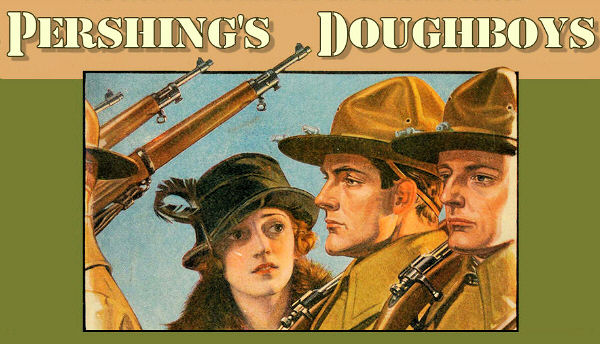
7 – 17 August 2018: Comprehensive Study of the American Expeditionary Force
Includes: All major battles, memorials, cemeteries, and service sites of your family members.
Price — $3,750 (dbl occupancy, sgl supp avail)
The full brochure covering the trip and registration details can now be downloaded
HERE
|
|
|
|
Thanks to each and every one of you who has contributed material for this issue. Until our next issue, your editor, Mike Hanlon. |
|
 (Or send it to a friend)
(Or send it to a friend)
|
Design by Shannon Niel
Content © Michael E. Hanlon
|







